When I tell people I live in Tokushima prefecture (prefecture is like the Japanese version of a province or state), most Japanese people laugh and give me the “poor you” face. My prefecture is not particularly famous for anything other than having a giant dance festival once a year (it’s outrageously fun) and apparently the worst drivers in Japan (can confirm). Tokushima is a small, unassuming little prefecture on the northeast corner of Shikoku, which is the smallest of the four main islands that make up Japan. There’s not many people here, and certainly no big glitzy cities. We don’t even have a train to get off our island – it’s a ferry or bus ride to get to the “main” part of Japan. We’re in the purple island, and if you see the little bump jutting east at the top, that’s my town, Naruto:
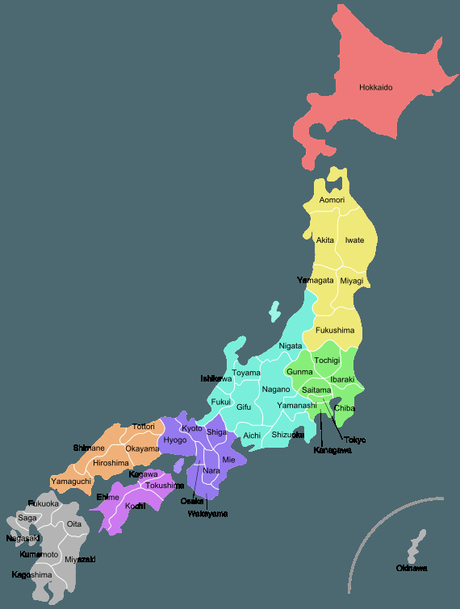
When Tokushima Prefectural International Exchange Association (TOPIA) reached out to foreign residents here asking if we wanted to be a part of a trial tour in exchange for our detailed feedback on the tour, I jumped at the chance. I knew there had to be interesting things to see and do here, but that the language barrier was holding me back from finding stuff on my own. So to have the opportunity to sit back and relax while someone else took care of ALL the logistics for me, AND provided an English translator (thank youuuuu Daralyn!!) – of course I wanted to go!
Getting There
My friend and I had to take the train to Tokushima City (about a 35 minute ride) to meet the tour group bus there. This was not as easy as it seems, because in our neck of the woods we have very inconvenient train service. It runs once every hour or two. So we ended up in Tokushima City over 30 minutes early, because the other train would get us there 40 minutes late. It was a good excuse to have breakfast at Starbucks (a rare treat for us) while we waited.
We boarded the bus after checking in and quickly realized how blind we had been to how many other foreigners were living here as the bus was completely full. However, the vast majority of the participants on this tour were Chinese and had their own Mandarin interpreter so we didn’t get a chance to interact much. There was just three of us following around the English interpreter.
Udatsu Townscape
Our first stop was the Udatsu Townscape in Wakimachi. This traditional part of town boasts buildings dating back hundreds of years with a unique building style. Our guide showed us the whitewashed udatsu poking off the buildings – they’re actually fire barriers. So if one house caught fire, the udatsu would stop it from spreading to the next one. In a village where everything is made of wood (literally EVERYTHING – these houses are built without nails or any metal construction pieces!), fire prevention was a big deal.
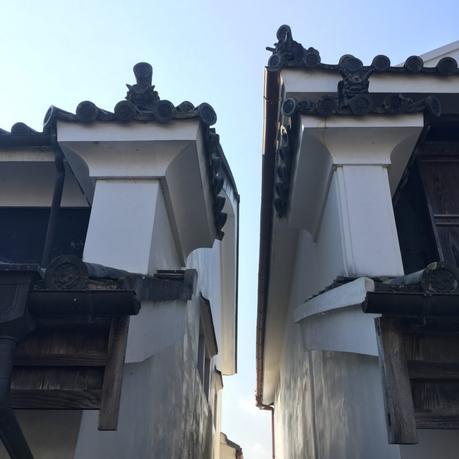
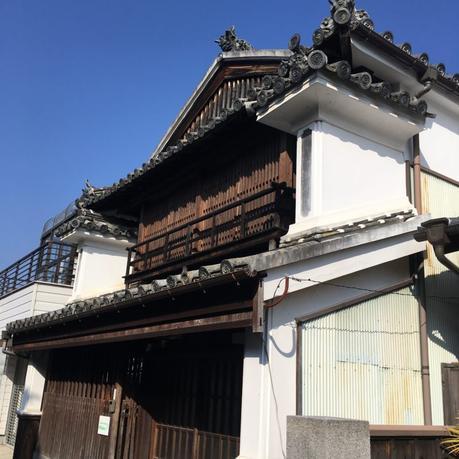
This town is also famous for indigo dyeing. There were a lot of wealthy merchants here back in the day, and a lot of their fortunes came from indigo. We stopped in shops that had all kinds of indigo dyed souvenirs. It’s really labor-intensive, and so indigo dyed goods are super expensive! I admired them but didn’t buy anything.
Shogo Kariyazaki Flower Exhibition
We timed our tour well with a flower exhibition that was being shown right in the middle of the Udatsu Townscape area. It was inside an old traditional-style house. I wasn’t sure what to expect but it was just a house with large flower/art pieces scattered throughout the house. I’m not much of an art person, but I thought the flowers mixed in with the art creations were cool. I liked being able to roam around and explore the house itself. The old style of construction is interesting and this was in a HUGE house that must have been owned by someone wealthy. It was beautifully restored.
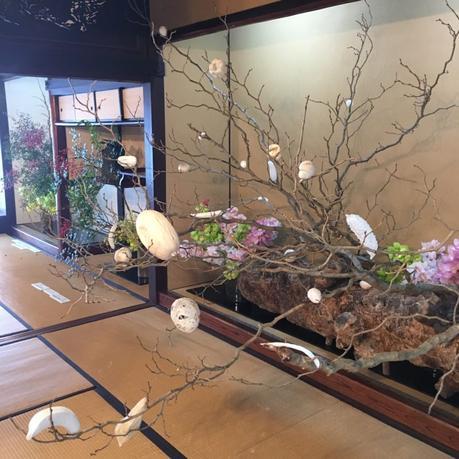
Anmitsu-kan
We headed further west in Mima to get lunch at Anmitsu-kan, a famous restaurant in the area. My co-workers were jealous when I told them I got to have lunch there! It also has a huge (and I mean HUGE) orchid greenhouse and souvenir shop.

The restaurant is styled like a massive log cabin with a distinct ski-chalet vibe. We were quickly served steaming bowls of handmade noodles with toppings (green onion, daikon and sesame seeds), a rice ball, a seaweed + egg-drop soup and a small salad. It was delicious!
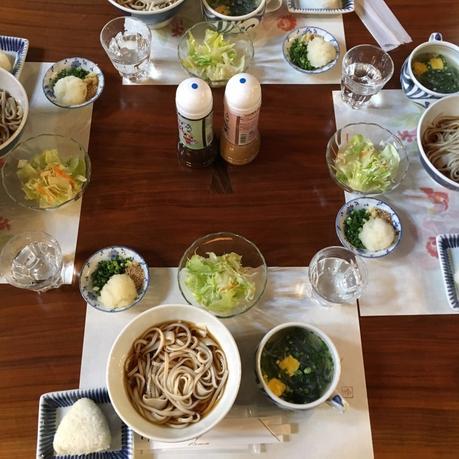
After lunch we ventured to an orchid greenhouse/souvenir shop:
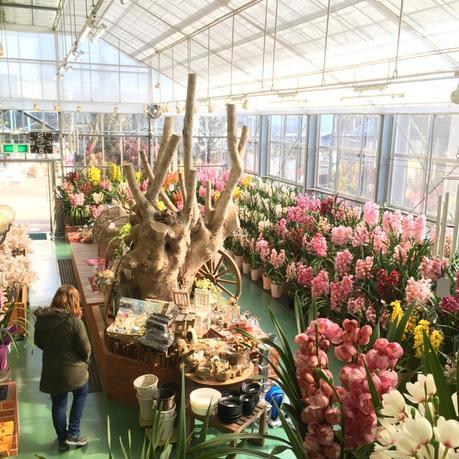
The smiling employees graciously offered up orchid wine, orchid tea and orchid candy for us to try. We perused the souvenirs (I left with some orchid candy) and just relaxed in the sunny, beautifully-scented building.
Juraku-ji
This was my second time at Juraku-ji (Juraku Temple) and I was actually super excited to go back. The first time I was there was last summer right after I arrived in Japan…like just a couple DAYS after getting to my town. We were “voluntold” to work at an English camp held at the temple, which I guess was meant to function as an orientation for us new ALTs, but mostly just had a bunch of jetlagged ALTs with no experience yet trying to wrangle 50 junior high and high schools kids – some of whom definitely had been sent to English camp against their will. It was face-meltingly hot in the summer, so much so that we couldn’t do any outdoor activities because people would have gotten heat stroke within minutes. We finally had a scavenger hunt at the end, but the senior ALTs who designed it had to make every other item inside so that we could get into the AC. It was not my favorite part of the summer.
However, visiting again in January was beautiful! I got to explore the grounds and see all the stuff that I couldn’t in the summer, which I was really happy about. The temple is beautiful and there are various shrines around the grounds. This time, we were here to trace Buddhist sutras. I had no idea what this meant before going in. They seated us at low tables in one of the larger rooms and we were given copies of the sutras, plus a calligraphy brush pen and a special paper to put over the sutras and trace them. It’s meant to be a zen activity, where you don’t have to think. However, we had to think a lot because it was a little tough to see the sutras through the paper and I don’t know kanji characters so I had no idea what I was doing. I decided to just be more zen and draw whatever I thought looked good!
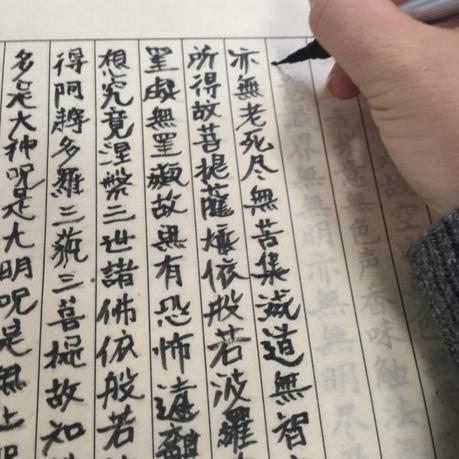
My characters might look fancy, but most are completely illegible and don’t say anything

Some of our tour group members made some really stunning ones. They obviously had used calligraphy brushes before, and some of the Chinese members of the group who could read the characters made some beautiful tracings. After we finished tracing, one of the temple members led us in chanting the sutra we had just traced. We were supposed to write our name and our wish for the year on it, and then deposit it in a special box at one of the shrines. Apparently a priest would bless them, and then our wish would come true.
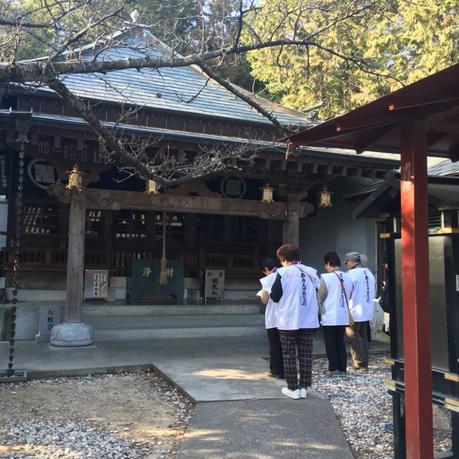
I was pretty proud of writing my name and wish in Japanese, but later that week I realized I had mixed up the Japanese words for money (okane) and snacks (okashi) so I guess my 2017 will be full of snacks. Not the worst thing I suppose!
Strawberry Picking
I don’t know if this was a thing in North America and I just didn’t know about it, but all-you-can-eat strawberry picking is a thing in Japan. Our next stop was Fruit Garden Yamagata, a greenhouse in my town (Naruto) run by a super cool Japanese dude with dreads who blasted reggae music while we munched on perfect strawberries. The cost varies depending on the time of year, anywhere from 1000 to 2000 yen ($10-20) for an hour of all-you-can-eat. You can’t take any home with you, but whatever you can stuff your face with in there is fair game.
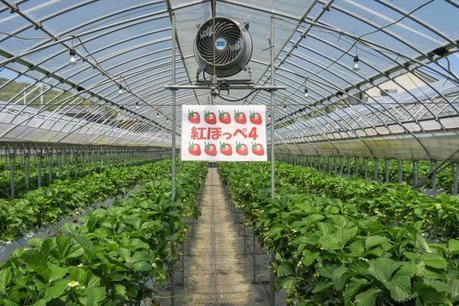
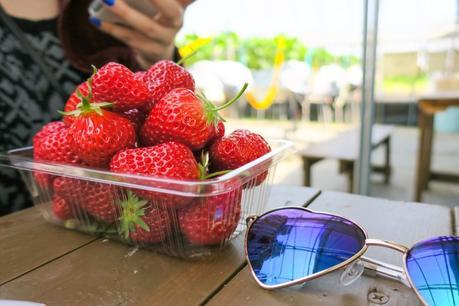
Other patrons came prepared – we saw cakes and ice cream being decorated with strawberries! (We kept this in mind… and then next time we visited, we brought whipped cream, chocolate and condensed milk which was an all around win. I’ll have a whole post dedicated to this place coming soon!)
Though my first winter in Naruto was very easy weather-wise, it was still nice to spend an hour on a January day in a toasty greenhouse filling my belly with the most quality strawberries I’ve ever eaten.
Feedback
After our time was up at Fruit Garden Yamagata, we were herded onto the bus to fill out questionnaires while we headed back to Tokushima City. (This was a little sad for my co-worker and I, because we wanted to provide our feedback but the strawberry farm was literally a 5-minute walk away from our house, and now we had a 40 minute bus ride back to the city and then a 35 minute train back to where we just came from!)
TOPIA did a good job with the questionnaires. They were detailed and left lots of room for us to write our comments. We were honest, which we don’t often get a chance to do in Japan. I enjoyed the tour a lot and was thrilled to get to see new parts of my prefecture that I wouldn’t have found on my own. However, the multilingual tour was a little difficult – the Chinese interpreter always barged ahead of the English one, and once the Chinese group had gotten their translation, they started talking to each other and it was difficult for us to hear the English translation. It also took forever to go from Japanese to Chinese to English for every single piece of info, so there was a lot of waiting around on both sides.
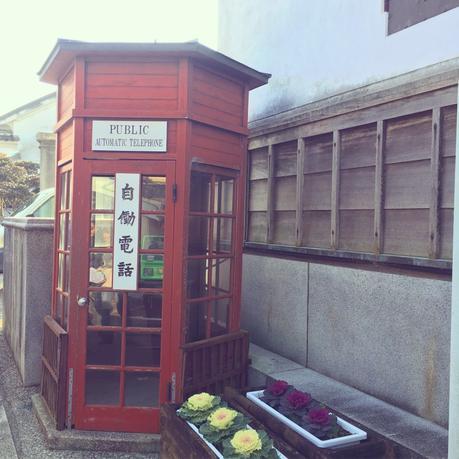
We also gave feedback about why it’s difficult to attract tourists to Tokushima. There are two main hurdles here – transportation in and out of our prefecture is EXPENSIVE and inconvenient. Not having a train to Honshu (the main part of Japan) makes the logistics of traveling a little more difficult, and our infrequent and inconvenient train service inside of Tokushima makes scheduling trips tough. One of the best things on this tour was having all the transportation organized, though it was still tricky for us to get to and from the starting point of the tour from our town. The other hurdle is the language barrier – Tokushima is fairly inaka (rural, countryside) and English is not a priority here. The majority of the population cannot speak anything other than Japanese. So for foreign tourists who don’t speak/read Japanese, it can be really hard to get around or to understand signage. It was so nice having a translator on this tour for us. I would not have got the full experience otherwise.
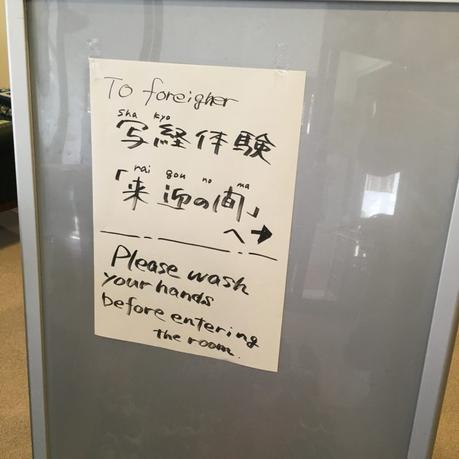
this sign greeted us at the temple… they meant well (you need to be clean in a temple) but the delivery is not very polite!
Overall, TOPIA did a great job putting together this tour and I enjoyed the day a lot. They took care of the two obstacles I always run into when I want to explore Tokushima (language barrier and transportation logistics) so it was very easy. I would recommend this tour to anyone wanting to see Tokushima and I hope TOPIA is able to continue to provide these tours for foreigners! I’d really like to go on another one (hint hint, TOPIA)!
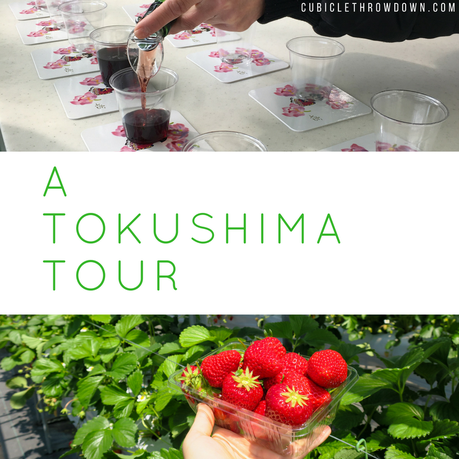
Disclaimer: all participants on this tour went for free in exchange for our feedback on the tour and a social media post about the tour. I was not asked or required to post on my blog about this. I just wanted to share a great experience and get more English info about Tokushima floating around on the internet!
Want more Cubicle Throwdown in your life? Of course you do, you rockstar. You can follow me on Facebook, Twitter, Instagram, G+ and Pinterest, if you like. You can also add me to your Bloglovin’ feed, or email me! If social media is not your jam and you just want my posts straight to your inbox, check out the sidebar and put your email address in the “Never Miss A Post” box. No newsletters or spam, just my posts – scouts honor. xo!
